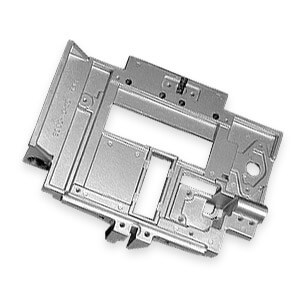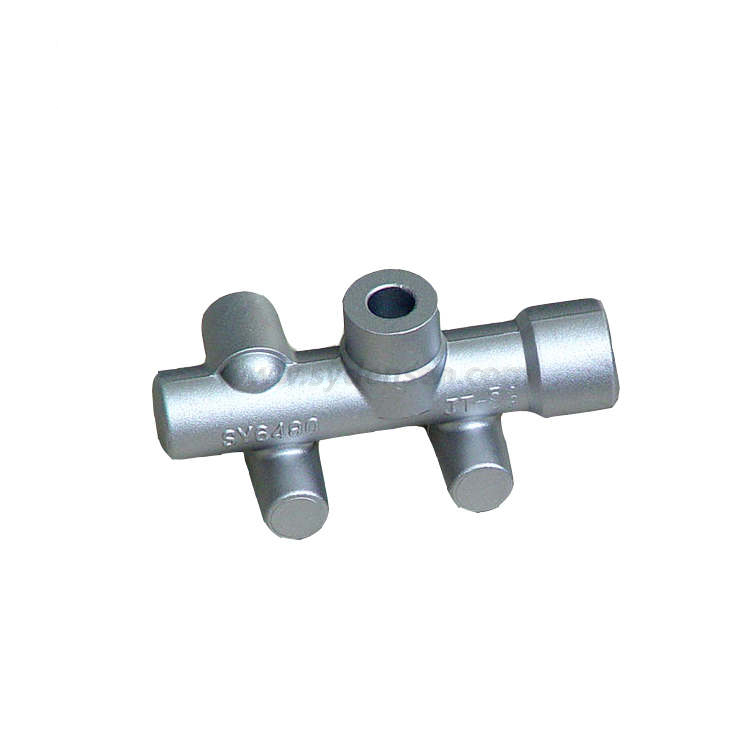Aluminum Casting Explained: Key Realities and Insights for Industry Professionals
Aluminum casting works as a crucial process in modern-day manufacturing, forming components across numerous industries. Its varied methods, such as sand and die casting, accommodate different production requirements. The unique residential or commercial properties of aluminum alloys boost their applicability, yet challenges stay in maintaining top quality and efficiency. Comprehending these aspects is necessary for industry specialists. What are the latest advancements and ideal practices that can further enhance this process?
Introduction of Aluminum Casting Processes

Crucial element of aluminum casting procedures consist of the preparation of mold and mildews, which may be made from sand, metal, or ceramic products, depending upon the meant usage. In addition, temperature control is vital to guarantee appropriate melting and solidification of aluminum.
The casting process enables detailed styles and can achieve high degrees of dimensional accuracy. As soon as cooled, the spreadings might undergo ending up operations such as machining or surface area treatment to meet certain performance standards. On the whole, aluminum casting acts as a versatile production technique, effectively satisfying the diverse needs of numerous markets.
Types of Aluminum Casting Approaches
In the domain of aluminum casting, numerous techniques are employed to achieve various results. Sand casting strategies supply flexibility and cost-effectiveness for intricate shapes, while die casting processes use high precision and performance for automation. Recognizing these methods is crucial for selecting the ideal approach based on job needs.
Sand Casting Techniques
Sand casting methods stand for a fundamental technique in aluminum casting, where sand is made use of as a mold material to form liquified metal. This process includes developing a pattern from the desired part, which is then placed in a sand combination to create a mold and mildew. The sand is compacted around the pattern, and after removal, it creates a tooth cavity in the shape of the component. Molten aluminum is put into this dental caries, permitting it to cool down and strengthen. One significant benefit of sand casting is its adaptability; it can fit huge parts and intricate shapes. Additionally, the materials made use of are reasonably low-cost, making it an available alternative for various manufacturing applications in the aluminum industry.
Die Casting Processes
Die casting processes are a popular technique for shaping aluminum elements, using high-pressure strategies to require molten steel right into specifically engineered mold and mildews. This procedure is specifically favored for its ability to produce intricate forms with limited resistances and a smooth surface. There are two main types of die casting: hot chamber and cool chamber. Warm chamber die casting is ideal for steels with low melting points, enabling faster production prices. Alternatively, cool chamber die casting is ideal for higher melting point metals, calling for a different melting heating system. Both techniques improve efficiency and reduce material waste, making them vital in automobile, aerospace, and durable goods sectors. Recognizing these processes helps professionals pick one of the most proper method for their particular applications.
Product Properties of Aluminum Alloys

Toughness and Sturdiness
Strength and durability are crucial attributes of aluminum alloys that make them appropriate for various casting applications. These materials show a beneficial strength-to-weight ratio, enabling for the production of light-weight yet robust components. With respect to tensile toughness, particular aluminum alloys can be engineered to endure considerable loads without flawing. This property is especially vital in industries such as aerospace and auto, where performance and safety and security are extremely important. In addition, aluminum alloys frequently keep their mechanical residential or commercial properties under diverse temperature problems, ensuring regular Get More Information efficiency. The inherent ductility of these alloys additionally permits reliable shaping throughout the casting procedure, making it much easier to create complex geometries. Overall, the strength and resilience of aluminum alloys contribute greatly to their prevalent usage in sophisticated applications.
Corrosion Resistance Characteristics
While aluminum alloys are prized for their strength and light-weight buildings, their deterioration resistance is one more important characteristic that boosts their viability for various applications. Aluminum normally develops a protective oxide layer when exposed to dampness, which assists to stop further oxidation. This integral property makes aluminum alloys specifically beneficial in environments prone to deterioration, such as aquatic and industrial settings. In addition, various alloy compositions can affect resistance levels, with particular alloys particularly crafted to boost this characteristic. Therapies like anodizing can further enhance corrosion resistance by thickening the oxide layer. Comprehending the deterioration resistance of aluminum alloys is important for industry specialists when selecting products for tasks calling for longevity and durability in tough atmospheres.
Advantages of Aluminum Casting in Production
Aluminum casting offers numerous benefits in production, making it a preferred choice for different industries. One considerable benefit is its light-weight nature, which contributes to lowered transport costs and enhanced power performance in end items. Furthermore, aluminum's superb thermal and electrical conductivity enhances performance in applications needing warmth dissipation or electric transmission.
The product's capacity to be cast right into elaborate shapes enables layout flexibility, decreasing the requirement for additional machining processes. Furthermore, aluminum casting shows remarkable deterioration resistance, bring about longer product life expectancies and lower maintenance costs.

Common Applications of Aluminum Castings
The flexibility of aluminum casting allows its widespread usage throughout various markets. Common applications consist of automotive parts, where light-weight and corrosion-resistant elements, such as engine blocks and transmission real estates, enhance automobile efficiency. In the aerospace sector, aluminum castings are used for architectural components, providing toughness without including considerable weight.
Additionally, the electrical market advantages from aluminum spreadings in manufacturing rooms and warm sinks, where thermal conductivity is essential. The durable goods sector likewise integrates aluminum spreadings in items like cookware, furniture, and ornamental products, integrating visual appeals with performance.
Moreover, the building market utilizes aluminum castings for architectural elements, home window frames, and components, which provide sturdiness and style adaptability. In general, the diverse applications of aluminum spreadings emphasize their value in modern-day production, adding to innovations in effectiveness and product style across multiple areas.
Advancements and Technical Developments
As industries continue to advance, technologies in aluminum casting innovation are transforming production procedures and item abilities. Developments in 3D printing and additive manufacturing have actually allowed the creation of intricate geometries that were formerly impossible to attain with standard techniques. These innovations enable quick prototyping, minimizing lead times and prices.
Furthermore, improvements in mold and mildew design and products have actually improved the casting procedure by raising effectiveness and reducing waste. The assimilation of wise manufacturing techniques, such as IoT gadgets and real-time data analytics, enables for better tracking and optimization of production specifications, resulting in greater quality outcomes.
Developments in aluminum alloys offer improved toughness, corrosion resistance, and lightweight residential properties, providing to the expanding needs in automobile and aerospace fields. Jointly, these innovations are not only enhancing efficiency yet additionally meeting the extensive criteria of modern engineering applications.
Finest Practices for Quality Assurance in Aluminum Casting
Ensuring premium results in aluminum casting calls for adherence to ideal methods that include numerous phases of try this out the manufacturing procedure. Initially, comprehensive material evaluation is important to validate the quality of aluminum alloys utilized, as pollutants can substantially influence the end product. Carrying out specific melting and pouring strategies decreases defects; maintaining optimal temperature levels protects against oxidation and advertises harmony.
Mold layout plays a vital role; using computer-aided design (CAD) can boost accuracy and minimize human error. Routine monitoring of the cooling process is vital to stay clear of warping and shrinkage. In addition, using non-destructive testing techniques, such as ultrasonic or X-ray assessments, helps recognize interior flaws without harming the elements.
Finally, establishing a responses loop with operators and engineers promotes continuous enhancement, making certain that high quality control measures advance together with technological improvements. By complying with these ideal methods, producers can enhance the reliability and performance of aluminum castings.
Often Asked Inquiries
What Are the Ecological Impacts of Aluminum Casting?
The environmental impacts of aluminum casting include substantial power consumption, greenhouse gas emissions, and possible water pollution from foundry operations. Additionally, bauxite mining for aluminum ore can result in environment devastation and soil deterioration.
How Does Aluminum Casting Compare to Other Metal Casting Processes?
Aluminum casting commonly supplies benefits in light-weight parts and deterioration resistance contrasted to various other processes, such as iron or steel casting, which may supply better toughness but result in heavier and less corrosion-resistant items. - Aluminum Casting Company
What Prevail Problems in Aluminum Castings and Their Reasons?
Usual issues in aluminum spreadings include porosity, contraction, and incorporations. Causes typically originate from incorrect putting strategies, insufficient mold and mildew style, or contamination of the liquified metal, affecting the final product's stability and performance.
What Safety Preventative Measures Should Be Taken During Aluminum Casting?
During aluminum casting, important safety preventative measures consist of wearing safety equipment, ensuring proper air flow, preserving a clean workspace, handling liquified steel with care, and following well-known protocols to reduce risks of burns, inhalation threats, and mishaps.
How Can I Boost the Efficiency of My Aluminum Casting Procedures?
To enhance performance in aluminum casting operations, one must maximize mold and mildew design, enhance material handling, utilize automated processes, conduct normal upkeep on devices, and purchase staff member training to enhance abilities and performance.
Different approaches exist, aluminum casting encompasses numerous primary procedures that cater to various applications and demands. Trick aspects of aluminum casting procedures consist of the preparation of mold and mildews, which may be made from sand, steel, or ceramic materials, depending on the meant usage. Sand casting methods stand for an essential approach in aluminum casting, where sand is view it utilized as a mold and mildew material to form molten steel. As industries proceed to evolve, technologies in aluminum casting innovation are changing production procedures and product capacities. Making certain top notch outputs in aluminum casting needs adherence to best methods that incorporate various stages of the production process.